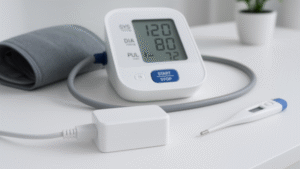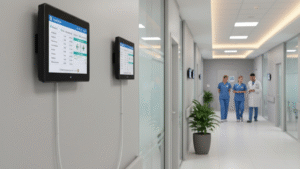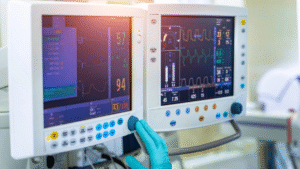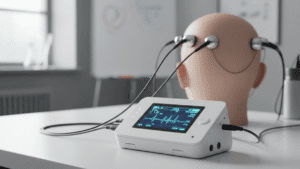Introduction
Electrocardiogram (ECG) devices are critical tools in modern healthcare, enabling the monitoring of the heart’s electrical activity to diagnose and manage cardiovascular conditions. With the rise of telemedicine and remote patient monitoring, portable and wearable ECG devices have become increasingly prevalent. These devices allow patients to monitor their heart health from home, providing convenience and enabling timely medical interventions. However, the design and operation of remote ECG devices require meticulous attention to electrical safety, particularly regarding leakage current. Leakage current, the unintended flow of electrical current through or across an insulating surface, poses significant risks in medical devices, especially those in direct contact with patients. Improper management of leakage current can lead to patient harm, device malfunction, or regulatory non-compliance.
A critical component in ensuring the safety of remote ECG devices is the power adapter, which serves as the interface between the device and the external power source. The selection of an appropriate power adapter is paramount to minimizing leakage current and ensuring compliance with stringent medical safety standards, such as IEC 60601-1. This article provides a comprehensive guide to leakage current considerations for remote ECG devices, focusing on the critical role of adapter selection. It explores the types of leakage currents, their implications for patient safety, regulatory requirements, and practical considerations for choosing power adapters to optimize the performance and safety of remote ECG devices.
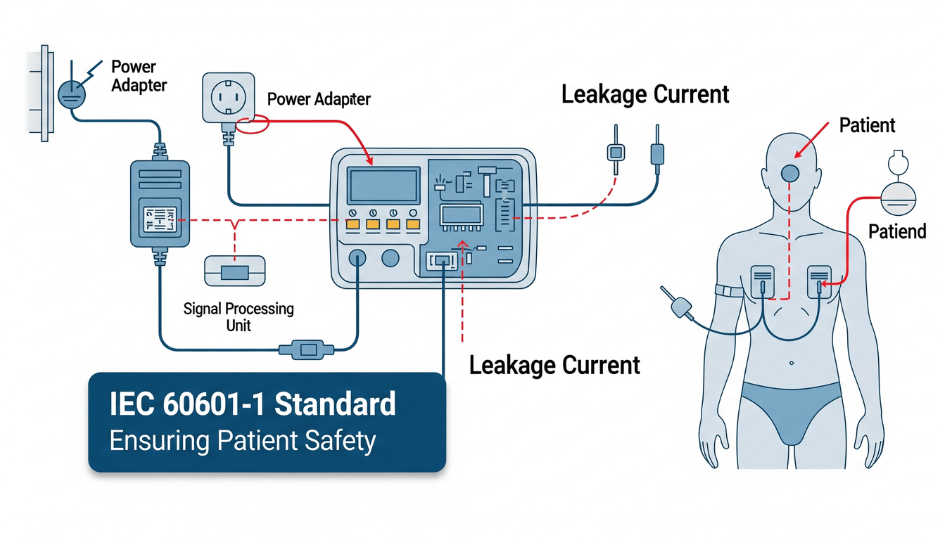
Understanding Leakage Current in Medical Devices
Definition of Leakage Current
Leakage current refers to the small amount of electrical current that flows through unintended paths in an electrical system, typically through insulation or parasitic capacitances. In medical devices like ECG monitors, leakage current is particularly concerning because it can flow through the patient, potentially causing discomfort, injury, or even life-threatening conditions such as ventricular fibrillation. Leakage currents are typically measured in microamperes (μA) and are categorized into three main types in medical devices:
- Earth Leakage Current: This is the current that flows from the device’s power supply to the ground through the protective earth conductor. It typically occurs in devices connected to mains power and is relevant for devices with grounded enclosures.
- Enclosure Leakage Current: Also known as touch current, this is the current that flows from the device’s enclosure to ground or another part of the device when touched by a person. It is a critical consideration for devices that patients or operators may contact.
- Patient Leakage Current: This is the current that flows through the patient, either from the device’s applied parts (e.g., electrodes) to ground or between different applied parts. This is the most critical type for ECG devices, as it directly affects patient safety.
Sources of Leakage Current
Leakage currents in remote ECG devices can originate from various sources, including:
- Capacitive Coupling: Parasitic capacitances between conductive parts, such as those in the power adapter or circuit board, can allow alternating current (AC) to leak.
- Insulation Imperfections: Poor-quality insulation materials or degradation over time can lead to increased leakage currents.
- Electromagnetic Interference (EMI): High-frequency signals from nearby devices or improper grounding can induce leakage currents.
- Power Adapter Design: The design and quality of the power adapter significantly influence leakage current. Inadequate isolation or poor component selection in adapters can result in higher leakage currents.
Risks Associated with Leakage Current
In remote ECG devices, excessive leakage current can have severe consequences:
- Patient Safety: Leakage currents exceeding safe limits (e.g., 10 μA for patient leakage current under normal conditions as per IEC 60601-1) can cause discomfort, burns, or cardiac arrhythmias.
- Device Performance: Leakage currents can introduce noise into the ECG signal, reducing the accuracy of heart rate and rhythm measurements.
- Regulatory Non-Compliance: Failure to meet leakage current limits can result in the device failing regulatory certifications, delaying market entry, or leading to recalls.
- Battery-Powered Devices: While battery-powered ECG devices may avoid mains-related leakage currents, improper charging circuits or adapters can still introduce risks during charging.
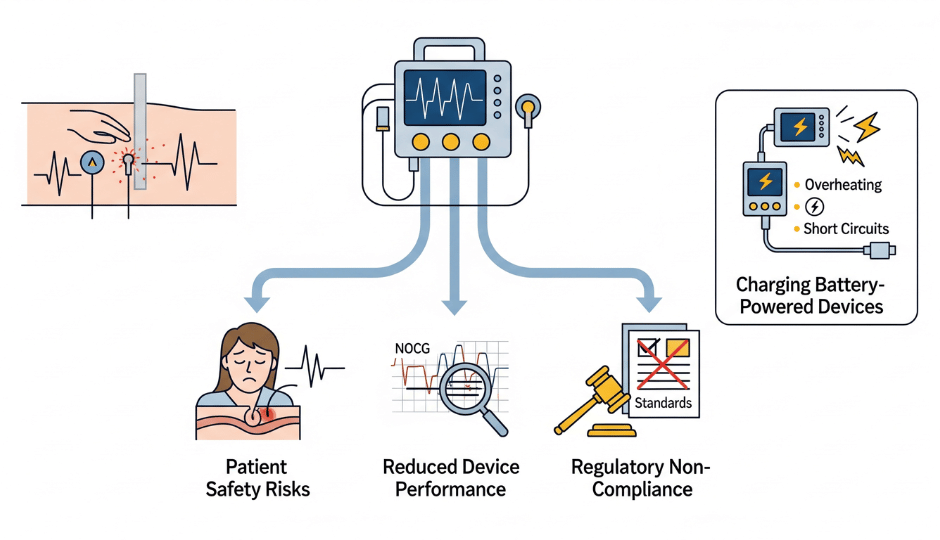
Regulatory Standards for Leakage Current in ECG Devices
IEC 60601-1 Overview
The International Electrotechnical Commission (IEC) standard 60601-1 is the cornerstone for the safety and performance of medical electrical equipment, including ECG devices. It specifies requirements for leakage currents to ensure patient and operator safety. Key requirements include:
- Normal Condition Limits:
- Earth Leakage Current: ≤ 5 mA
- Enclosure Leakage Current: ≤ 100 μA
- Patient Leakage Current: ≤ 10 μA (for Type CF applied parts, common in ECG devices)
- Single Fault Condition Limits:
- Earth Leakage Current: ≤ 10 mA
- Enclosure Leakage Current: ≤ 500 μA
- Patient Leakage Current: ≤ 50 μA (for Type CF applied parts)
Type CF (Cardiac Floating) applied parts, used in ECG devices, have the strictest requirements due to their direct connection to the heart. Remote ECG devices must comply with these limits under both normal and single-fault conditions, such as a broken ground connection or insulation failure.
Additional Standards
In addition to IEC 60601-1, other standards may apply, depending on the region and application:
- IEC 60601-1-2: Addresses electromagnetic compatibility (EMC), which can influence leakage currents through EMI.
- IEC 60601-2-25: Specific to ECG devices, this standard provides additional requirements for performance and safety, including leakage current considerations.
- ISO 14971: Guides risk management for medical devices, requiring manufacturers to assess and mitigate risks associated with leakage currents.
- Regional Regulations: In the United States, the FDA enforces compliance with IEC standards and additional requirements under 21 CFR Part 820. In the European Union, the Medical Device Regulation (MDR) aligns with IEC standards but may include additional conformity assessments.

Challenges in Compliance for Remote ECG Devices
Remote ECG devices, particularly wearable or portable units, face unique challenges in meeting leakage current requirements:
- Miniaturization: Smaller devices have limited space for insulation and isolation components, increasing the risk of leakage currents.
- Battery Operation and Charging: While battery-powered devices reduce mains-related leakage, charging circuits and adapters must be carefully designed to prevent leakage during charging.
- Home Use Environment: Unlike hospital settings, home environments may lack proper grounding, increasing the risk of leakage currents.
- Cost Constraints: High-quality, low-leakage adapters and components are more expensive, posing challenges for cost-sensitive consumer devices.
Role of Power Adapters in Leakage Current Management
Importance of Power Adapters
Power adapters are critical in remote ECG devices, as they provide the necessary voltage and current to charge batteries or power the device directly. However, they are also a primary source of leakage current due to their connection to the mains power supply. A poorly designed adapter can introduce excessive leakage currents, compromising patient safety and device performance. Key considerations for adapter selection include:
- Isolation: Adapters must provide adequate electrical isolation between the mains and the device to minimize leakage currents.
- Low Leakage Design: Adapters should be designed to meet or exceed the leakage current limits specified in IEC 60601-1.
- EMC Performance: Adapters must minimize EMI, which can induce leakage currents or interfere with ECG signal quality.
- Reliability: High-quality adapters reduce the risk of insulation degradation or component failure over time.
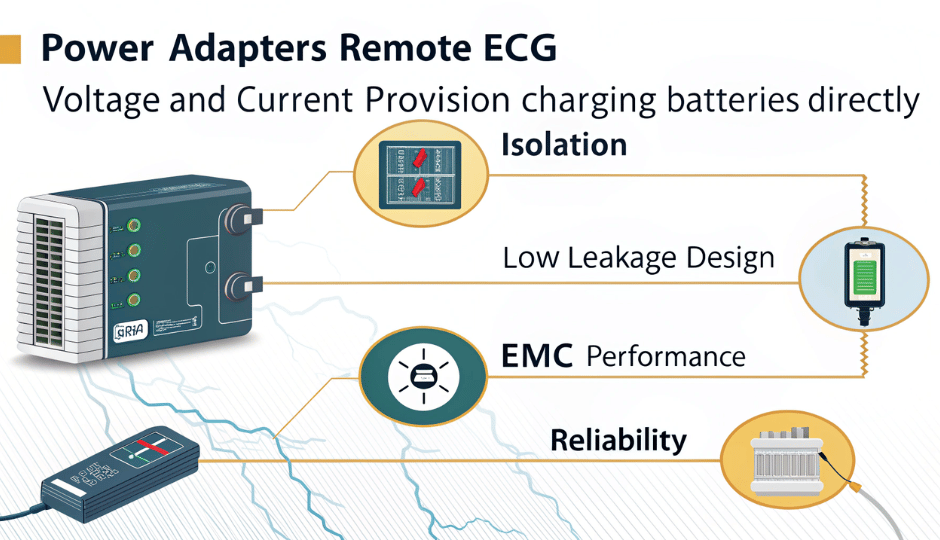
Types of Power Adapters for ECG Devices
Power adapters for remote ECG devices can be categorized based on their design and application:
- Linear Power Adapters:
- Advantages: Low EMI, simple design, and stable output.
- Disadvantages: Larger size, lower efficiency, and higher heat generation, which can contribute to leakage currents.
- Suitability: Less common for portable ECG devices due to size and efficiency constraints.
- Switching Power Adapters:
- Advantages: High efficiency, compact size, and suitable for portable devices.
- Disadvantages: Higher EMI, which requires careful filtering to prevent leakage currents.
- Suitability: Preferred for remote ECG devices due to their compact size and efficiency, provided they meet medical-grade standards.
- Medical-Grade Adapters:
- Characteristics: Specifically designed to comply with IEC 60601-1, offering low leakage currents, high isolation, and robust EMC performance.
- Suitability: Ideal for ECG devices, especially those with Type CF applied parts.
- USB Adapters:
- Advantages: Widely available, compact, and compatible with USB-powered ECG devices.
- Disadvantages: Non-medical-grade USB adapters may have higher leakage currents and inadequate isolation.
- Suitability: Suitable only if explicitly designed for medical use and compliant with IEC 60601-1.
Key Specifications for Adapter Selection
When selecting a power adapter for a remote ECG device, the following specifications should be considered:
- Leakage Current: The adapter should have leakage currents well below the IEC 60601-1 limits for Type CF applied parts (e.g., <10 μA patient leakage current).
- Isolation Voltage: A minimum isolation voltage of 4 kV (for two means of patient protection, 2 MOPP) is required for medical-grade adapters.
- Output Voltage and Current: Must match the ECG device’s requirements, typically 5V–12V and 1A–3A for portable devices.
- Efficiency: Higher efficiency reduces heat generation, which can affect insulation and leakage current.
- EMC Compliance: The adapter should comply with IEC 60601-1-2 to minimize EMI-induced leakage currents.
- Certifications: Look for adapters certified to IEC 60601-1, UL 60601-1, or equivalent standards.
- Connector Type: Ensure compatibility with the ECG device’s input port, such as USB-C, barrel connectors, or proprietary connectors.
Practical Considerations for Adapter Selection
1. Matching Adapter to Device Requirements
The adapter must be tailored to the specific needs of the ECG device. For example, a wearable ECG device with a small battery may require a low-power USB-C adapter, while a larger home-based ECG monitor may need a higher-power adapter with a barrel connector. Mismatched adapters can lead to inefficient charging, overheating, or increased leakage currents.
2. Ensuring Medical-Grade Certification
Only medical-grade adapters should be used for ECG devices to ensure compliance with IEC 60601-1. Non-medical-grade adapters, such as generic USB chargers, often fail to meet the stringent leakage current and isolation requirements, posing safety risks.
3. Evaluating Leakage Current Performance
Manufacturers should request detailed leakage current test data from adapter suppliers, including measurements under normal and single-fault conditions. Independent testing by accredited laboratories can verify compliance with IEC 60601-1.
4. Considering Environmental Factors
Remote ECG devices are often used in uncontrolled environments, such as homes with variable power quality. Adapters should be designed to handle voltage fluctuations, surges, and poor grounding to maintain low leakage currents.
5. Balancing Cost and Quality
While medical-grade adapters are more expensive, their use is non-negotiable for patient safety and regulatory compliance. Manufacturers should avoid cutting costs by using substandard adapters, as this can lead to costly recalls or legal liabilities.
6. Future-Proofing with Scalability
As remote ECG devices evolve, adapters should support future upgrades, such as higher power requirements or new connector standards. Modular designs that allow adapter swapping without redesigning the device can enhance longevity.
Design Strategies to Minimize Leakage Current
In addition to selecting an appropriate power adapter, manufacturers can implement design strategies within the ECG device to further reduce leakage currents:
- Enhanced Insulation: Use high-quality insulation materials with high dielectric strength to prevent leakage paths.
- Isolation Barriers: Incorporate optocouplers or transformers in the device’s circuitry to isolate the patient from the power supply.
- Grounding Techniques: Ensure proper grounding within the device to divert leakage currents away from the patient.
- Filtering: Use EMI filters to reduce high-frequency noise that can contribute to leakage currents.
- Low-Leakage Components: Select capacitors, transformers, and other components with low parasitic capacitance to minimize leakage.
Case Studies: Adapter Selection in Practice
Case Study 1: Wearable ECG Device
A manufacturer developing a wearable ECG patch for continuous heart monitoring needed a compact, USB-C-based power adapter for charging. The device required Type CF compliance due to its direct contact with the patient’s skin. After evaluating several adapters, the manufacturer selected a medical-grade USB-C adapter with a patient leakage current of 5 μA, well below the 10 μA limit. The adapter featured 4 kV isolation and complied with IEC 60601-1-2 for EMC. The result was a safe, reliable charging system that met regulatory requirements and provided clear ECG signals.
Case Study 2: Home-Based ECG Monitor
A home-use ECG monitor with a larger form factor required a 12V, 2A adapter. Initial testing with a non-medical-grade adapter revealed excessive enclosure leakage current (150 μA), exceeding the IEC 60601-1 limit. The manufacturer switched to a medical-grade switching adapter with a leakage current of 80 μA and enhanced EMI filtering. This change ensured compliance and improved signal quality, reducing noise artifacts in the ECG readings.
Challenges and Future Trends
Challenges in Adapter Selection
- Supply Chain Constraints: Medical-grade adapters are produced by a limited number of suppliers, leading to potential supply chain bottlenecks.
- Cost Pressures: Balancing safety with cost is a persistent challenge, especially for consumer-focused ECG devices.
- Evolving Standards: Regulatory standards are continuously updated, requiring manufacturers to stay informed and adapt quickly.
- Wireless Charging: The rise of wireless charging introduces new leakage current challenges, as electromagnetic fields can induce currents in the device.
Future Trends
- Advanced Isolation Technologies: New materials and designs, such as solid-state transformers, may further reduce leakage currents.
- Smart Adapters: Adapters with built-in monitoring and feedback systems could dynamically adjust output to minimize leakage currents.
- Integration with IoT: As ECG devices become part of the Internet of Things (IoT), adapters will need to support secure, low-leakage power delivery for connected systems.
- Sustainability: Eco-friendly adapters with recyclable materials and higher efficiency will align with growing environmental concerns.
Conclusion
Leakage current is a critical consideration in the design and operation of remote ECG devices, directly impacting patient safety, device performance, and regulatory compliance. The power adapter plays a pivotal role in managing leakage currents, making its selection a crucial step in the development process. By choosing medical-grade adapters that meet IEC 60601-1 requirements, manufacturers can ensure low leakage currents, high isolation, and robust EMC performance. Practical considerations, such as matching adapter specifications to device needs, evaluating environmental factors, and balancing cost with quality, are essential for success. Additionally, design strategies like enhanced insulation and EMI filtering can further minimize leakage risks.
As remote ECG devices continue to evolve, manufacturers must stay ahead of regulatory changes, supply chain challenges, and emerging technologies like wireless charging. By prioritizing leakage current management and adapter selection, developers can create safe, reliable, and effective ECG devices that empower patients to monitor their heart health with confidence.


